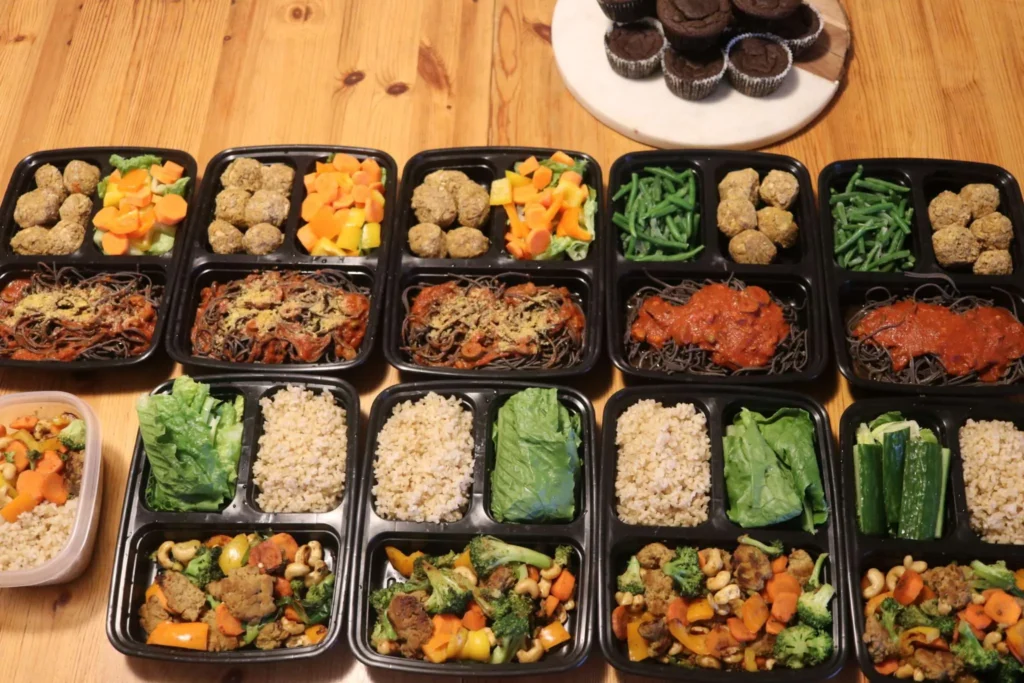Adopting a vegan lifestyle can seem daunting at first, especially when it comes to meal planning and preparation. However, with a bit of organization and the right strategies, you can create delicious and nutritious meals that make your vegan journey enjoyable and sustainable. Here’s a comprehensive guide to help beginners get started with vegan meal prep.
Benefits of Vegan Meal Prep
Before diving into the how-to, let’s explore why meal prepping is beneficial:
- Saves Time: Prepping meals in advance can save you a lot of time during busy weekdays. No more last-minute cooking or unhealthy takeout options.
- Cost-Effective: Buying ingredients in bulk and preparing your own meals is often much cheaper than dining out.
- Reduces Stress: Having a plan in place means you won’t have to worry about what to eat every day.
- Promotes Healthy Eating: Preparing your own meals allows you to control what goes into your food, making it easier to maintain a balanced diet.
Getting Started with Vegan Meal Prep
- Plan Your Meals:
- Weekly Planning: Start by planning your meals for the week. Include breakfast, lunch, dinner, and snacks. Look for simple and nutritious vegan recipes that you enjoy.
- Balanced Nutrition: Ensure that your meals are balanced. Include a variety of fruits, vegetables, whole grains, legumes, nuts, and seeds to meet your nutritional needs.
- Create a Shopping List:
- Inventory Check: Before heading to the store, check what you already have in your pantry and fridge.
- Essential Ingredients: Some staples to have on hand include grains (rice, quinoa, oats), legumes (beans, lentils, chickpeas), fresh and frozen vegetables, fruits, nuts, seeds, plant-based milk, and tofu or tempeh.
- Invest in Storage Containers:
- Quality Containers: Invest in good-quality, BPA-free containers in various sizes. Mason jars are great for salads and overnight oats, while glass containers work well for reheating meals.
- Labeling: Use labels to mark the contents and date of preparation, ensuring freshness and reducing waste.
- Prep and Cook:
- Batch Cooking: Cook large batches of grains, legumes, and roasted vegetables. These can be mixed and matched throughout the week to create different meals.
- Raw Prep: Wash, chop, and store fresh vegetables and fruits in separate containers. This makes assembling meals quick and easy.
- Protein Prep: Prepare plant-based proteins like tofu, tempeh, or seitan in advance. Marinate and bake or stir-fry them for easy addition to meals.
Sample Vegan Meal Prep Plan
Here’s a simple meal prep plan to get you started:
Breakfast:
- Overnight Oats: Combine rolled oats, chia seeds, almond milk, and your favorite fruits in a jar. Let it sit overnight in the fridge.
- Smoothie Packs: Pre-pack smoothie ingredients (spinach, banana, berries, flaxseeds) in freezer bags. Blend with plant-based milk in the morning.
Lunch:
- Quinoa Salad: Cook quinoa and mix with chickpeas, chopped vegetables (cucumber, bell pepper, cherry tomatoes), and a lemon-tahini dressing.
- Veggie Wraps: Use whole-grain tortillas and fill them with hummus, avocado, grated carrots, and leafy greens.
Dinner:
- Stir-Fry: Prepare a large batch of stir-fry with tofu, broccoli, bell peppers, snap peas, and a soy-ginger sauce. Serve with brown rice.
- Chili: Cook a big pot of three-bean chili with tomatoes, onions, garlic, and spices. Portion into containers for easy reheating.
Snacks:
- Energy Balls: Blend dates, nuts, and cocoa powder. Roll into balls and store in the fridge.
- Veggies and Hummus: Cut carrots, celery, and bell peppers. Store in water to keep them crisp, and pair with homemade or store-bought hummus.
Tips for Success
- Start Simple: Don’t overwhelm yourself with complex recipes. Start with a few basic dishes and gradually expand your repertoire.
- Stay Flexible: Be prepared to adjust your plan. Sometimes ingredients might not be available, or you might have leftovers to use up.
- Use Leftovers: Incorporate leftovers into new meals to minimize waste. For example, leftover quinoa can be added to salads or soups.
- Stay Organized: Keep your fridge and pantry organized to easily see what you have and need to use.
Conclusion
Vegan meal prep can be a game-changer for maintaining a healthy and balanced diet while saving time and money.
By planning your meals, shopping smart, and prepping in advance, you’ll set yourself up for success on your vegan journey.
Remember to keep it simple, stay flexible, and enjoy the process of discovering new and delicious vegan meals. Happy prepping!
